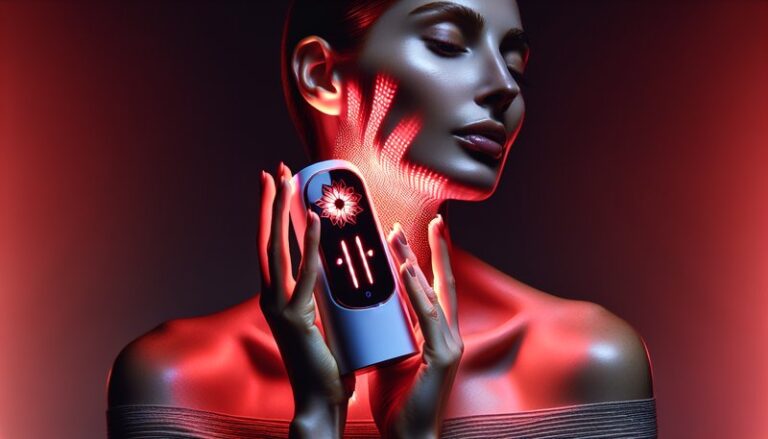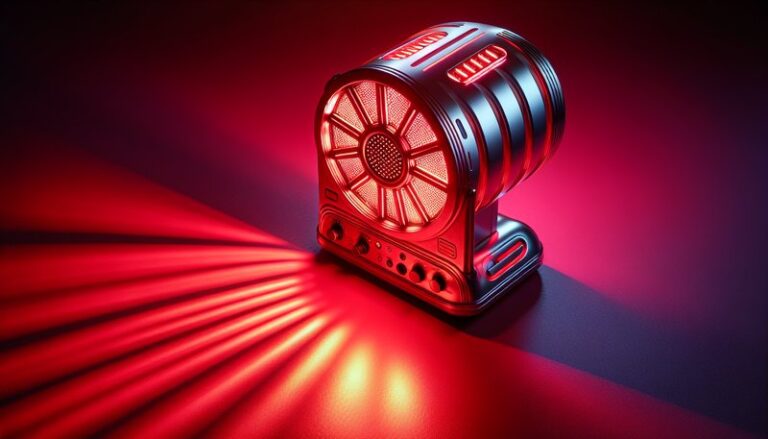Does Red Light Therapy Work On Horses?
Does Red Light Therapy Work On Horses?
Have you ever wondered if the innovative health treatments making waves in human wellness could benefit your equine companion?
This article explores the effectiveness of red light therapy in horses, delving into its mechanisms, benefits, and considerations. We’ll give you a comprehensive look at whether this therapy can be a valuable tool for horse owners and trainers.
Key Takeaways
- Red light therapy uses low-level lasers or light-emitting diodes to promote healing and reduce inflammation in horses.
- Research indicates potential benefits, including improved wound healing, pain relief, and enhanced recovery from injuries.
- While promising, red light therapy should be viewed as a complementary treatment rather than a standalone solution.
What is Red Light Therapy?
Red light therapy is a non-invasive treatment that employs wavelengths of red and near-infrared light. It stimulates cellular processes, encouraging healing and reducing inflammation.
Originally popularized in human medicine, this therapy is now gaining traction in the equestrian world. The technology typically involves a handheld or panel-based device that emits specific wavelengths aimed at targeted areas.
Read our complete guide Is Red Light Therapy Safe for Implants?
How Does It Work?
Red light therapy works at the cellular level. When cells absorb this light, they activate mitochondria, the energy factories of the cell, leading to increased ATP production. This process stimulates healing mechanisms, reduces inflammation, and can even alleviate pain in horses.
What are the Benefits of Red Light Therapy?
Using red light therapy can provide a multitude of benefits to horses, particularly those recovering from injury or dealing with chronic pain.
Enhanced Healing
This therapy promotes faster wound healing by increasing blood flow and oxygen levels in the targeted area. For instance, horses recovering from surgeries or injuries may benefit significantly from accelerated tissue repair.
Pain Relief
For horses suffering from conditions like arthritis or laminitis, red light therapy can serve as a natural pain management tool. The therapy reduces inflammation and promotes relaxation, leading to decreased discomfort.
Improved Performance
Regular use of red light therapy may enhance overall physical performance in horses. By improving circulation and reducing recovery time from strenuous activities, horses may perform better in competitions and training.
Supplementary Health Benefits
Additional benefits include improved coat condition, reduced stress levels, and even enhanced mood, contributing to overall well-being.
Is it Possible to Use Red Light Therapy on Horses?
Yes, red light therapy can be effectively applied to horses. Many veterinarians and equine therapists are now utilizing this treatment to address various health issues.
What are the Advantages of Using Red Light Therapy?
- Non-Invasive Procedure: Red light therapy does not require invasive techniques, making it a low-risk option for horse owners.
- Ease of Use: Many products are designed for at-home usage, allowing horse owners to incorporate therapy into their regular care routines.
- Minimal Side Effects: Most horses tolerate this therapy well, with few reported adverse effects, making it generally safe.
What are the Disadvantages of Using Red Light Therapy?
- Limited Research: While preliminary studies show promise, more extensive research is necessary to fully understand its effectiveness in different scenarios.
- Cost: Depending on the equipment used, costs can vary significantly, which might be a barrier for some horse owners.
- Time Commitment: Consistent treatment schedules may require time and dedication from owners, especially for horses with ongoing conditions.
What are the Things to Consider Before Using Red Light Therapy?
Before deciding to use red light therapy on your horse, several factors should be considered to ensure efficacy and safety.
Check out our analysis Why Red Light Therapy?
Specific Health Conditions
Consult a veterinarian to determine if your horse’s condition is suitable for red light therapy. Some conditions may respond better than others.
Therapy Duration and Frequency
Determine the recommended duration and frequency of treatment sessions to achieve optimal results. Your vet can guide you on this based on your horse’s specific needs.
Device Quality
Invest in a reliable and effective red light therapy device. Look for products that have been tested and are recommended by equine professionals.
What are the Alternatives to Red Light Therapy?
While red light therapy holds promise, several alternative treatments exist that horse owners may explore.
Cold Laser Therapy
Similar to red light therapy, cold laser therapy uses lower-intensity laser light to promote healing and reduce pain, often used in veterinary medicine.
Acupuncture
This traditional Chinese medicine technique has been used to relieve pain and promote healing in various animals, including horses, and can be a beneficial adjunct to other therapies.
Physical Therapy
Equine physical therapy, involving exercises and manual therapies, can aid rehabilitation and improve athletic performance, especially post-injury.
Conclusion: Is it Recommended to Use Red Light Therapy?
In summary, red light therapy can be an effective complementary treatment for various equine health issues, promoting healing and enhancing overall well-being. Horse owners should consult with veterinarians to determine suitable treatment plans and whether red light therapy is appropriate for their equine companions.
Frequently Asked Questions
Does red light therapy hurt horses?
No, red light therapy is generally a painless procedure. Most horses respond positively to the treatment setting.
How often should I administer red light therapy to my horse?
The frequency can vary based on your horse’s specific needs. A vet can help establish a routine that works best, which may be several times a week.
Can all horses benefit from red light therapy?
While many horses may benefit, individual responses can vary. Always consult with a veterinarian to assess your horse’s specific condition.
Are there any contraindications for red light therapy?
Yes, horses with certain conditions, such as cancer, should avoid this therapy. Always seek vet advice before starting treatment.
How long does each red light therapy session last?
Sessions typically last anywhere from 15 to 30 minutes, depending on the treatment area and specific protocols used.






